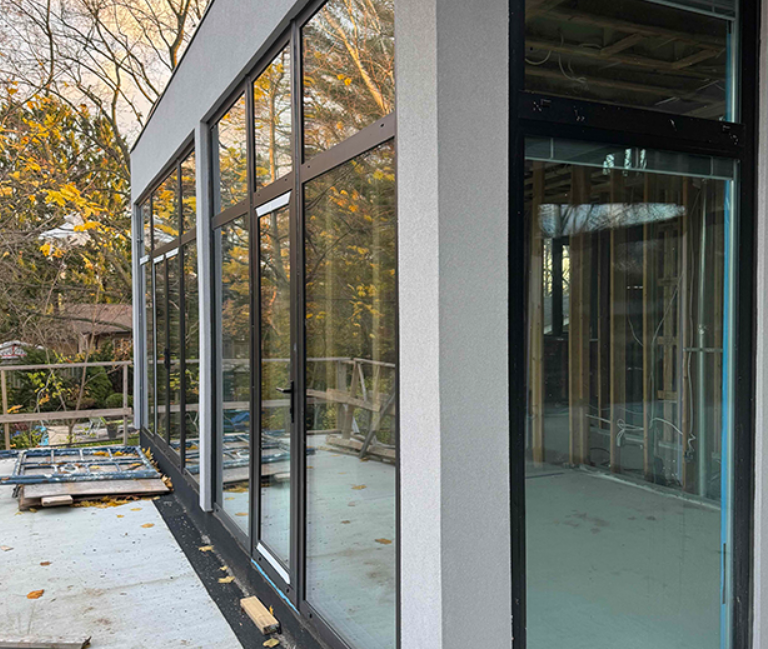When it comes to saving money on household expenses, most homeowners don’t immediately think of their windows. But upgrading to energy-efficient windows can significantly lower your energy bills every month—while also improving indoor comfort, reducing environmental impact, and even increasing property value.
In this article, we’ll explore how energy-efficient windows work, the technologies behind them, and how they save you money throughout the year.
What Are Energy-Efficient Windows?
Energy-efficient windows are designed to prevent the loss of heated or cooled air from your home. They use advanced materials and construction techniques to minimize thermal transfer, making it easier for your heating and cooling systems to maintain a consistent indoor temperature.
These windows typically include:
- Multiple panes of glass (usually double or triple)
- Low-E (low-emissivity) coatings
- Gas fills (argon or krypton) between panes
- Insulated frames
- Warm edge spacers
- High-performance weatherstripping
All these features work together to reduce heat loss in the winter and heat gain in the summer—saving energy and cutting utility costs.
How They Save Money in Every Season
❄️ Winter Savings: Keep the Warmth In
During cold months, traditional single-pane windows allow heat to escape through the glass, forcing your furnace or heating system to work harder to maintain comfort. This translates to higher heating costs.
Energy-efficient windows reduce heat loss by:
- Acting as insulation through multi-pane construction
- Reflecting indoor heat back into your home with Low-E coatings
- Sealing gaps with insulated frames and tight weatherstripping
The result: Lower heating bills and a warmer home.
Summer Savings: Keep the Heat Out
In the summer, sunlight and warm outdoor air can easily overheat your home through outdated or poorly insulated windows. This leads to higher air conditioning usage and increased energy bills.
Energy-efficient windows protect against this by:
- Blocking UV and infrared rays with Low-E glass
- Minimizing heat transfer through insulated frames
- Reducing solar heat gain while still allowing natural light in
The result: A cooler home and lower AC costs.
Real-World Energy Savings
According to the U.S. Department of Energy, heat gain and loss through windows are responsible for 25%–30% of residential heating and cooling energy use.
Replacing single-pane windows with ENERGY STAR® certified double-pane windows can save:
- Up to $465 per year in energy bills, depending on your location and climate
- Even more if your windows are particularly drafty or damaged
In colder climates, the savings are primarily on heating. In warmer climates, you’ll notice more savings on air conditioning.
Additional Financial Benefits
💡 Lower Maintenance Costs
Energy-efficient windows often have features like UV-resistant coatings that reduce fading in carpets, furniture, and artwork—saving you replacement costs.
💰 Tax Credits and Rebates
Many local utility companies and governments offer rebates or tax incentives for upgrading to energy-efficient windows. These programs can significantly offset the upfront cost of installation.
📈 Increased Property Value
Homes with energy-efficient features are more attractive to buyers. New windows are a visible upgrade that adds value and can speed up the selling process.
Energy-Efficiency Features to Look For
When shopping for energy-efficient windows, look for these important indicators:
- ENERGY STAR® Certification: Ensures the window meets government-backed energy efficiency standards.
- U-Factor: Measures how well a window prevents heat from escaping. Lower is better.
- Solar Heat Gain Coefficient (SHGC): Measures how well a window blocks heat from the sun. Lower is better in hot climates.
- Visible Transmittance (VT): Indicates how much natural light enters. Higher is better for daylighting.
- Air Leakage: The rate of air infiltration. Lower numbers indicate tighter seals.
Choosing windows with the right specifications for your climate zone will maximize both comfort and cost savings.
Long-Term Return on Investment
While energy-efficient windows require an upfront investment, they quickly pay for themselves through:
- Monthly savings on utility bills
- Reduced HVAC wear and tear
- Lower maintenance and repair costs
- Higher resale value of your home
Depending on your home’s size and energy use, most homeowners see a full return on investment within 5 to 10 years—with continued savings afterward.
Final Thoughts
If you’re looking for a practical way to lower your energy bills, increase home comfort, and make an environmentally responsible upgrade, energy-efficient windows are a smart choice. They offer year-round savings, long-term durability, and aesthetic appeal—all while reducing your carbon footprint.
Looking to boost your home’s energy efficiency, security, and curb appeal? Window star expert team specializes in high-quality windows and doors Mississauga, tailored to fit your style and budget.






